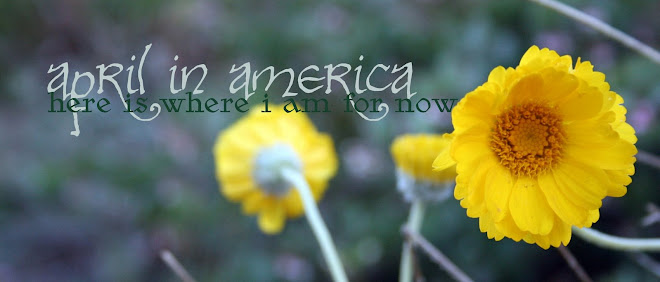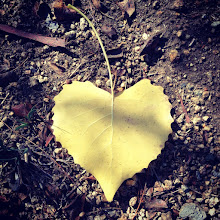skip to main |
skip to sidebar
I’m working on illustrative maps for a historic housing development near Los Angeles. It’s not artistically challenging: pretty much involves digitally tracing scans of the original as-built blueprints, and color coding plant material as specified by little numbers on the as-builts. I’ve learned a lot by tracing the work of a practically forgotten master landscape architect.
 The last set of drawings has changes scribbled all over, trees scratched out, new numbers hastily written without proper erasure, and it’s driving me crazy. Is that a 4 marked over a 9? Or a 9 marked over a 4? Or a 6 scribbled over a 5? I bet Fred Barlow Jr. never expected his work to be on the National Register. I bet he never thought someone would be studying it in preparation for a restoration plan. I’ve nigh lost my vision and pulled out my hair trying to decipher some of the lines and material notations.
The last set of drawings has changes scribbled all over, trees scratched out, new numbers hastily written without proper erasure, and it’s driving me crazy. Is that a 4 marked over a 9? Or a 9 marked over a 4? Or a 6 scribbled over a 5? I bet Fred Barlow Jr. never expected his work to be on the National Register. I bet he never thought someone would be studying it in preparation for a restoration plan. I’ve nigh lost my vision and pulled out my hair trying to decipher some of the lines and material notations.
I don’t expect to design permanent, lasting gardens at this phase of my career. I hope to be a master designer someday, and to be an expert plantswoman. Some of Barlow’s favorite plants are invasive here in Southern California, so even he didn’t necessary make perfect plant material choices in this landmark design. But by golly, I’ve learned a lesson here: write legibly in the final drawing. Erase things completely. Correct the key. And for that measure, place the key on the plan, because this one has been lost.
birding life list (in process!)
- White-crowned Sparrow (Zonotrichia ?) in winter
- Western Wood-Pewee (Contopu sordidulus)
- Western Tanager (Piranga ludoviciana)
- Western Scrub Jay (Aphelocoma californica)
- Western Bluebird (Sialia mexicana)
- Tufted Titmouse (Baeolophus bicolor)
- Stellar's Jay (Cyanocitta stelleri)
- Sparkling Violetear (Colibri coruscans)
- Snowy Owl (Nyctea scandiaca)
- Snowy Egret (Egretta thula)
- Ruddy Duck (Oxyura jamaicensis)
- Red-winged Blackbird (Agelaius phoeniceus)
- Red-tailed Hawk (Buteo jamaicensis)
- Pied Crow (Corvus albus)
- Northern Mockingbird (Mimus polyglottos)
- Northern Cardinal (Cardinalis cardinalis)
- Mourning Dove (Zenaida macroura)
- Mallard (Anas platyrhynochos)
- male Superb Sunbird (Cinnyris superbus) i think
- Malachite Kingfisher (Alcedo cristata)
- Lesser Goldfinch, greenbacked (Carduelis psaltria)
- Lazuli Bunting (Passerina amoena)
- Indigo Bunting (Passerina cyanea)
- House Finch (Carpodacus mexicanus)
- Hooded Oriole (Icterus cucullatus nelsoni)
- Greater Roadrunner (Geococcyx califorianus)
- Great Horned Owl (Bubo virginianus)
- Great Blue Heron (Ardea herodias)
- Congo African Grey (Psittacus erithacus erithacus)
- Common Garden Bulbul (Pychonotus barbatus)
- Cinnamon Teal (Anas cyanoptera)
- Cattle Egret (Bubulcus ibis)
- Canada Goose (Branta canadensis)
- California Towhee, juvenile (Pipilo crissalis)
- California Thrasher (Toxostoma redivivum)
- Brown Pelican (Pelecanus occidentalis)
- Blue Jay (Cyanocitta cristata)
- Black-crowned Night-Heron (Nycticorax nycticorax)
- Black-capped Chickadee (Poecile atricapillus)
- Black Phoebe (Sayornis nigricans)
- Black Crowned Waxbill (Estralida nonnula)
- Bald Eagle (Haliaeetus leucocephalus)
- Anna's Hummingbird (Calypte anna)
- American Robin (Turdus migratorius)
- American Kestrel (Falco sparverius)
- American Goldfinch (Carduelis tristis)
- American Coot (Fulica americana)
- American Avocet (Recurvirostra americana)
- African Pygmy-Kingfisher (Ispidina picta)
- Acorn Woodpecker (Melanerpes formicivorus)
 The last set of drawings has changes scribbled all over, trees scratched out, new numbers hastily written without proper erasure, and it’s driving me crazy. Is that a 4 marked over a 9? Or a 9 marked over a 4? Or a 6 scribbled over a 5? I bet Fred Barlow Jr. never expected his work to be on the National Register. I bet he never thought someone would be studying it in preparation for a restoration plan. I’ve nigh lost my vision and pulled out my hair trying to decipher some of the lines and material notations.
The last set of drawings has changes scribbled all over, trees scratched out, new numbers hastily written without proper erasure, and it’s driving me crazy. Is that a 4 marked over a 9? Or a 9 marked over a 4? Or a 6 scribbled over a 5? I bet Fred Barlow Jr. never expected his work to be on the National Register. I bet he never thought someone would be studying it in preparation for a restoration plan. I’ve nigh lost my vision and pulled out my hair trying to decipher some of the lines and material notations.
